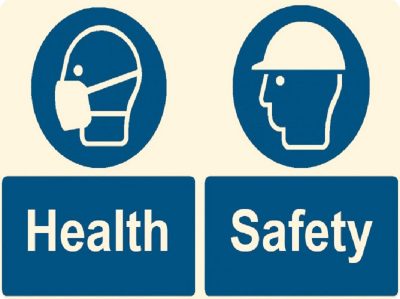With so much to do on a daily basis, it can be easy to shrug off health and safety procedures or forget to implement strategies that could keep your workforce safe. Unfortunately, slacking in these areas could have disastrous results. So, here’s how to improve your workplace practices. Invest in the right equipment for heavy lifting Many jobs require some form of heavy lifting, but it’s important to ensure that tasks are carried out correctly by investing in adequate equipment such as hoists, excavators and loaders. This equipment may need to be fitted with heavy duty castors so that the machine can safely handle heavy weights or perform particular functions, so make sure the equipment your business is using is up to scratch. Employees should not be expected to lift heavy items without the proper equipment (or training on how to use the equipment safely), so take the relevant steps to ensure their safety. Provide personal protective equipment Personal protective equipment (PPE) should be supplied to all workers who need it. While hard hats and steel toe boots are required on building sites, those working with dangerous chemicals may also need facemasks, gloves and overalls, as well as other pieces of protective clothing – it all depends on the type of industry you’re in and the requirements of specific jobs 3. Put up health and safety signs In order to comply with The Health and Safety (Safety Signs and Signals) Regulations 1996, you must use safety signs if a significant risk to employees and others remains despite putting in place all other relative measures. From ‘hot water’ signs to ‘mind the step’ and ‘low roof’ signs there’s a multitude of warning plaques you might need to position. Think about fire safety All businesses should have someone responsible for fire safety, be it the owner of the premises, the facilities manager or someone else. This person should follow government advice by: carrying out a fire risk assessment and reviewing it regularly alerting the necessary staff members about any risks identified putting in place and maintaining appropriate fire safety measures planning for an emergency providing staff information, fire safety instruction and training It’s important to take all fire safety rules and regulations seriously – lives are at risk, and you could be fined or go to prison if you don’t put measures in place. Carry out full risk assessments As well as fire safety risk assessments you should also carry out a full assessment of your entire business, identifying anything that could pose a threat to employees or visitors. The Health and Safety Executive provides extensive risk management advice for you to follow (much of which will be useful for the points raised above). Start by addressing the things you current have concerns about. If you discover wobbly steps, for instance, having a driveway repaved could make the entrance to your premises a lot safer. Similarly, if you have a habit of leaving computers on overnight, identify doing so as a fire hazard; send round a company email reminding staff to shut down all electrical equipment properly before leaving at night. Health and safety at work is of paramount importance, so put it to the front of your mind and protect employees in every way you can.





